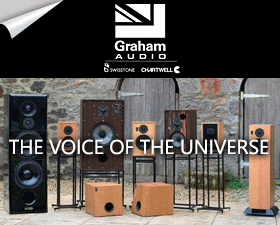"Jump factor" is extremely subjective . And
in my opinion Gaudi's played loud really have the "breath of live" - I would not mind listening to the King Lyon opening theme played through them!

One of our members owns the Empreror, perhaps he can also post on this subject.
Soundlabs or XLFs, in the proper system and room, with some recordings, also have it.
Yes, latest Sound Labs with Bass Focus Panels and Consummate Backplates reproduce music recordings that have a jump factor.
I recognize two kinds, the macro-jump, often confused with "slam", and the micro-jump, that has to do with the technic of the player, the score and the instrument itself. Yes, the "macro" is there with DTD horn recordings, snare drums, and so on. This is easy to recognize although perhaps not that easy to reproduce
well. It is sometimes un-nerving, and it can be just in about any kind of music.
What is most pleasing to this music lover are the micro-jumps - they catch you out - are they supposed to be there? How well do you know the score or the interpreter? This is when you can tell that a piano is truly a
percussion instrument, and not a string instrument. For example, when the pedals are being used in certain passages. Just a couple of notes - come from out of nowhere - it is as if they are poking at you. Wow. This "micro-dynamics" is analogous to that associated with some Decca, Dynavector, EMT, Ortofon, and strain-gauge cartridges. (I am listening to a xylophone right now in Carnival of the Animals on some "highest quality" streaming music service and it sounds like the impact occurs after the sound - bleah!)
An example of micro-jump - the other night when I was playing an Angel recording of Agustin Anievas performing Chopin Improptus. I dialing in the VTA on my Analogue Artisan TT with the Gold Mongoose Arm using its SRA remote control. I knew I had it dialed in when in certain passages just a few notes jumped out at me. How wonderful a listening experience! (I was not trained on the piano so I am not exactly sure which pedals were or were not used.) Unexpected, I was not anticipating it; it took me unawares! It makes me want to run out and get the score for the piece and look to see how Chopin or the artist annotated it. I need to get more of Anievas' recordings. The spirit of all those involved in the recording, the piano; some call it pyrotechnics!

















